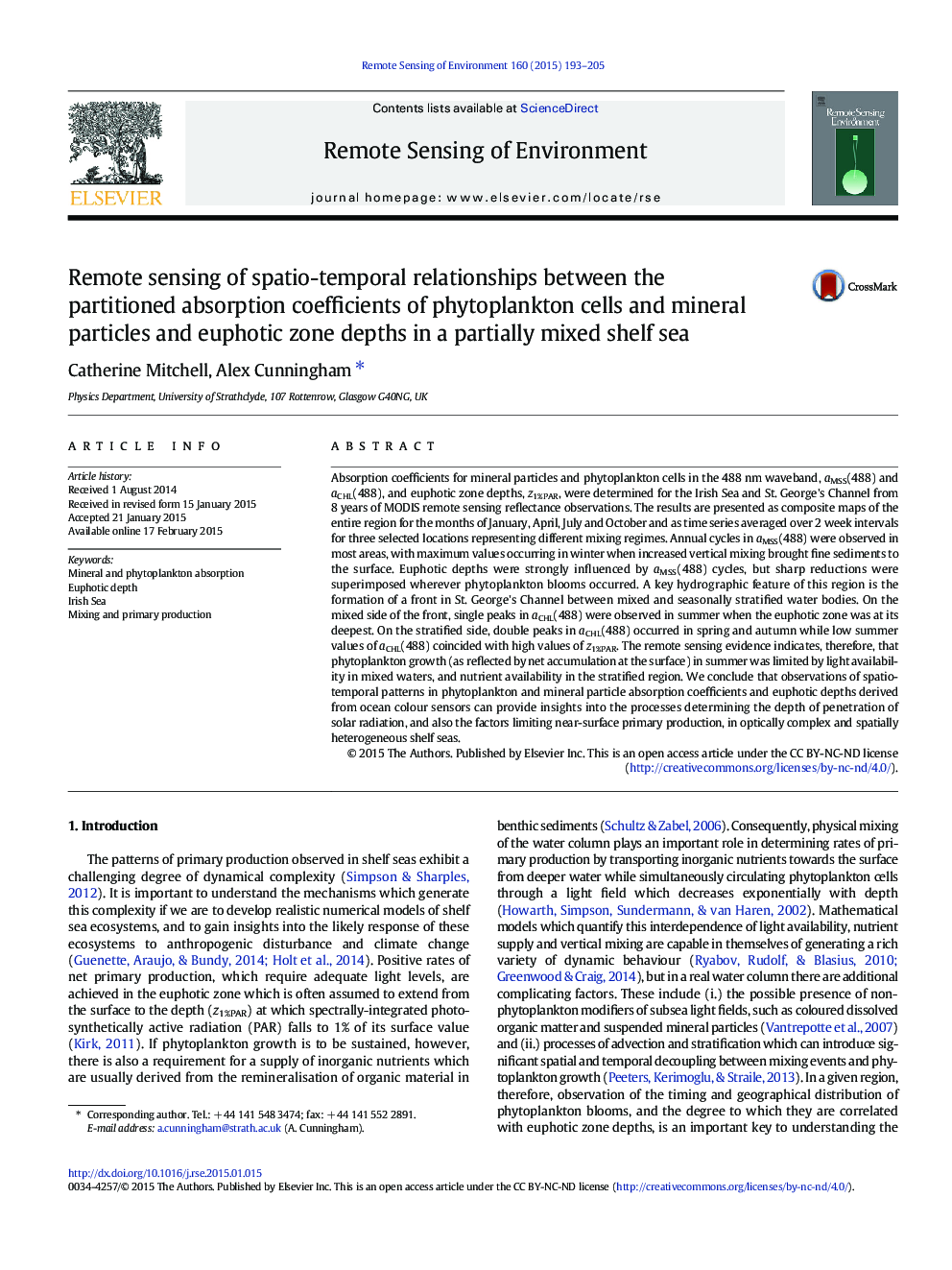| Article ID | Journal | Published Year | Pages | File Type |
|---|---|---|---|---|
| 6345981 | Remote Sensing of Environment | 2015 | 13 Pages |
Abstract
Absorption coefficients for mineral particles and phytoplankton cells in the 488Â nm waveband, aMSS(488) and aCHL(488), and euphotic zone depths, z1%PAR, were determined for the Irish Sea and St. George's Channel from 8Â years of MODIS remote sensing reflectance observations. The results are presented as composite maps of the entire region for the months of January, April, July and October and as time series averaged over 2Â week intervals for three selected locations representing different mixing regimes. Annual cycles in aMSS(488) were observed in most areas, with maximum values occurring in winter when increased vertical mixing brought fine sediments to the surface. Euphotic depths were strongly influenced by aMSS(488) cycles, but sharp reductions were superimposed wherever phytoplankton blooms occurred. A key hydrographic feature of this region is the formation of a front in St. George's Channel between mixed and seasonally stratified water bodies. On the mixed side of the front, single peaks in aCHL(488) were observed in summer when the euphotic zone was at its deepest. On the stratified side, double peaks in aCHL(488) occurred in spring and autumn while low summer values of aCHL(488) coincided with high values of z1%PAR. The remote sensing evidence indicates, therefore, that phytoplankton growth (as reflected by net accumulation at the surface) in summer was limited by light availability in mixed waters, and nutrient availability in the stratified region. We conclude that observations of spatio-temporal patterns in phytoplankton and mineral particle absorption coefficients and euphotic depths derived from ocean colour sensors can provide insights into the processes determining the depth of penetration of solar radiation, and also the factors limiting near-surface primary production, in optically complex and spatially heterogeneous shelf seas.
Keywords
Related Topics
Physical Sciences and Engineering
Earth and Planetary Sciences
Computers in Earth Sciences
Authors
Catherine Mitchell, Alex Cunningham,
